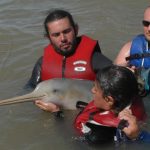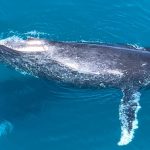← Back
Green turtles’ uses of Marine Protected Areas on the West African coasts
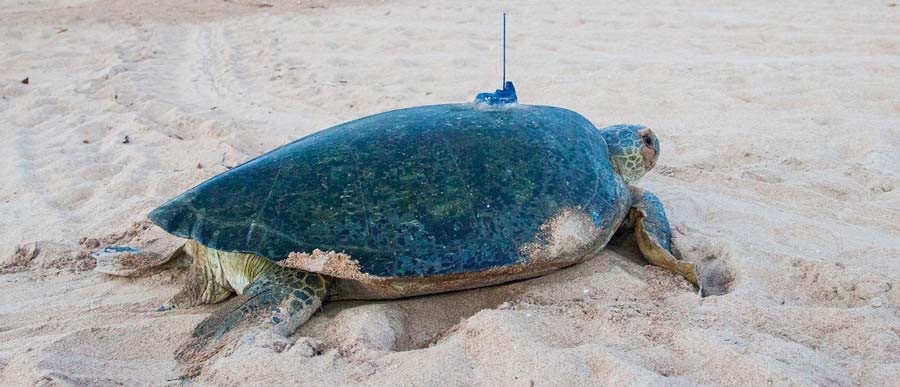
Green turtles are found along the West African upwelling. A network of Marine Protected Areas has been established during the past 25 years. Its efficiency towards protecting green turtles can be studied using Argos satellite telemetry.
Main Photo: Green turtle with an Argos PTT (credit M. Varela)
Marine Protected Areas efficiency, and in particular their connectivity, is one of the main concerns for endangered species protection. We saw studies about sea turtles in different regions in this regard (around Florida How endangered species such as marine turtles use Marine Protected Areas? or in the Mediterranean Sea Loggerhead turtles and Mediterranean Marine Protected Areas).
The West African coasts are a major upwelling zone, with rich biodiversity and critical ecosystems. Several Marine Protected Areas have been established in the region, mostly since 2000, and been networked within the RAMPAO (Réseau régional d’Aires Marines Protégées en Afrique de l’Ouest) network, extending across seven West African coastal and island nations (Cabo-Verde, Mauritania, Senegal, The Gambia, Guinea-Bissau, Guinea, and Sierra Leone).
Tracking of green turtles along the West African coasts
45 female green turtles (Chelonia mydas) nesting in the Bijagós Archipelago (Guinea-Bissau) were equipped with satellite tags from 2018 to 2020, at the João-Vieira Poilão Marine National Park (some more were equipped in 2021, including males, which are not part of the same study). They were tracked during breeding, migration, and foraging, to see how many of them used MPAs, and how much time they spent in MPAs in every one of those periods. Over the whole timespan all the tracked turtles moved between 10.5°N and 20.5°N, an area within which there are 28 MPAs (including the one where they were equipped).
More info about animal tracking with Argos
After filtering, the tracks of 40 individuals during breeding, 18 during migration, and 35 during foraging were retained for analysis.
During the breeding period, the breeding females stayed near the nesting beaches, within the limits of the João Vieira – Poilão Marine National Park, so within a Marine Protected Area.
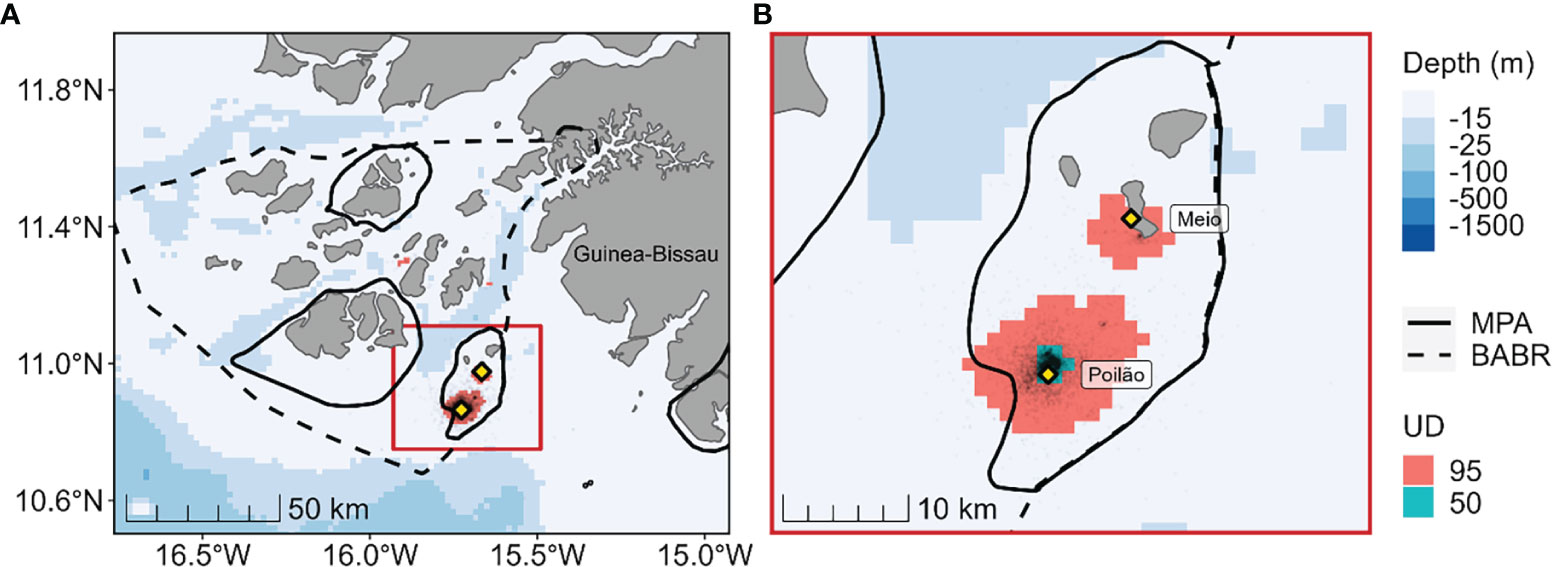
(A) Distribution of 40 female green turtles tracked during breeding. Yellow diamonds indicate the sites where satellite tags were deployed. The 95% (home range, red) and 50% (core-use, blue-green) utilization distribution areas are shown. The bold solid lines show the limits of existing marine protected areas (MPAs) and the dashed line the extent of the Bolama-Bijagós Archipelago Biosphere Reserve (BABR). (B) Inset showing close-up of distribution around the nesting sites. (from [Patrício et al., 2022]).
18 individuals migrated north of the Bijagós, while 12 turtles remained resident in the region. The turtles which migrated followed a similar path along the shoreline for most of them, even if a few went further offshore. Three main coastal stretches were identified as particularly important migration corridors: from the outer Bijagós to The Gambia, off the city of Dakar in Senegal, and along the south of Mauritania to the south of the Banc d’Arguin. 21% of those corridors were within the RAMPAO MPAs (if putting aside the starting Bijagós MPA)
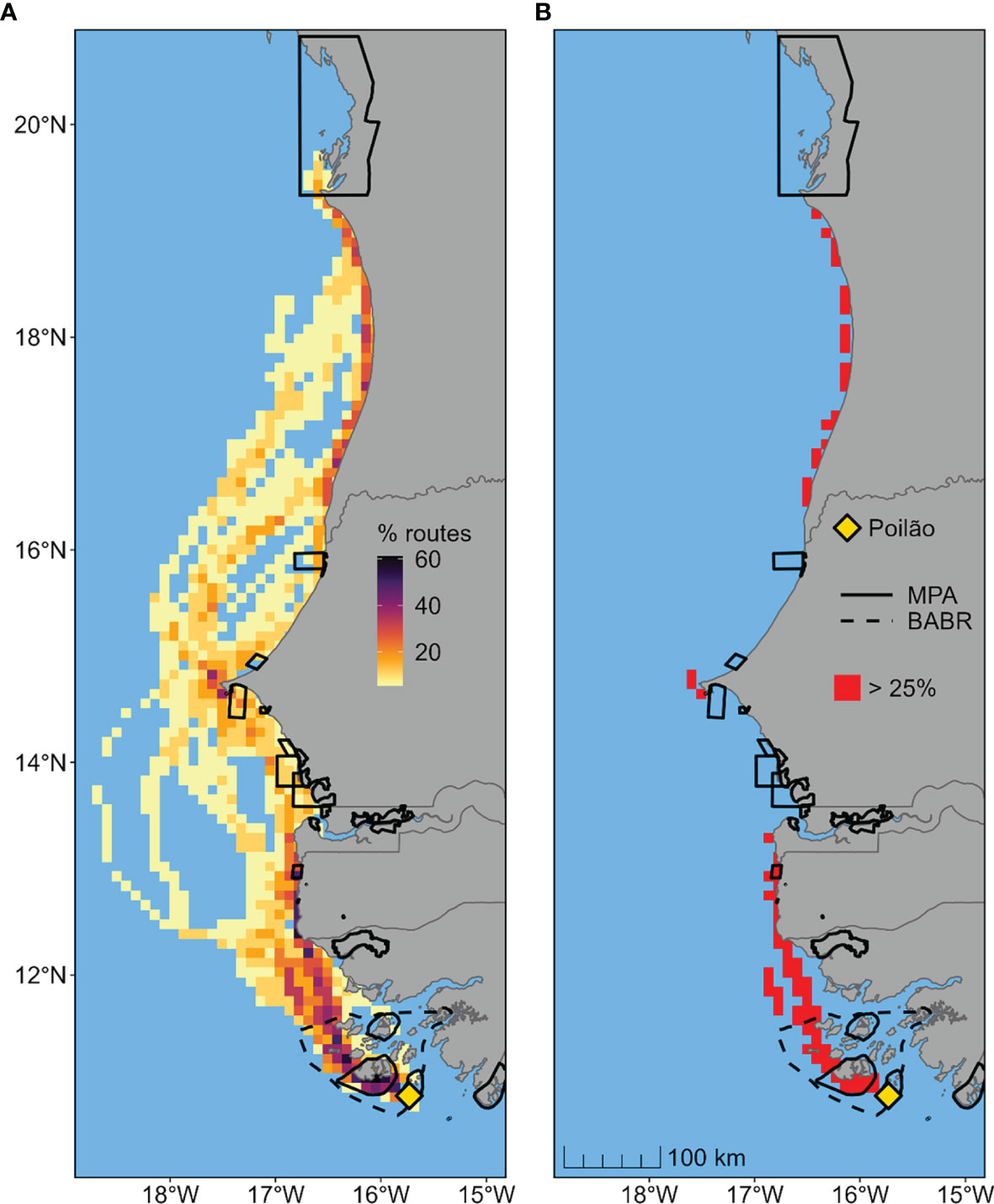
Migration routes of 18 female green turtles travelling from the nesting island in Guinea-Bissau (i.e., Poilão Island) to foraging areas in Senegal, The Gambia or Mauritania. (A) Percentage of overlapping migration routes, defined as 95% probability areas estimated using dynamic Brownian bridge movement models. (B) Identified high-passage corridors, defined as grid cells used by at least 25% of migrating turtles. Black solid and dotted lines represent existing conservation areas in the region. (Marine Protected Areas [MPA] and UNESCO Bolama-Bijagós Biosphere Reserve [BABR]). (from [Patrício et al., 2022])
35 turtles were tracked into the foraging period. Of those, 26 used MPAs, with an average of 78% of their tracking positions within the limits of RAMPAO MPAs, across Guinea-Bissau, Senegal and Mauritania.
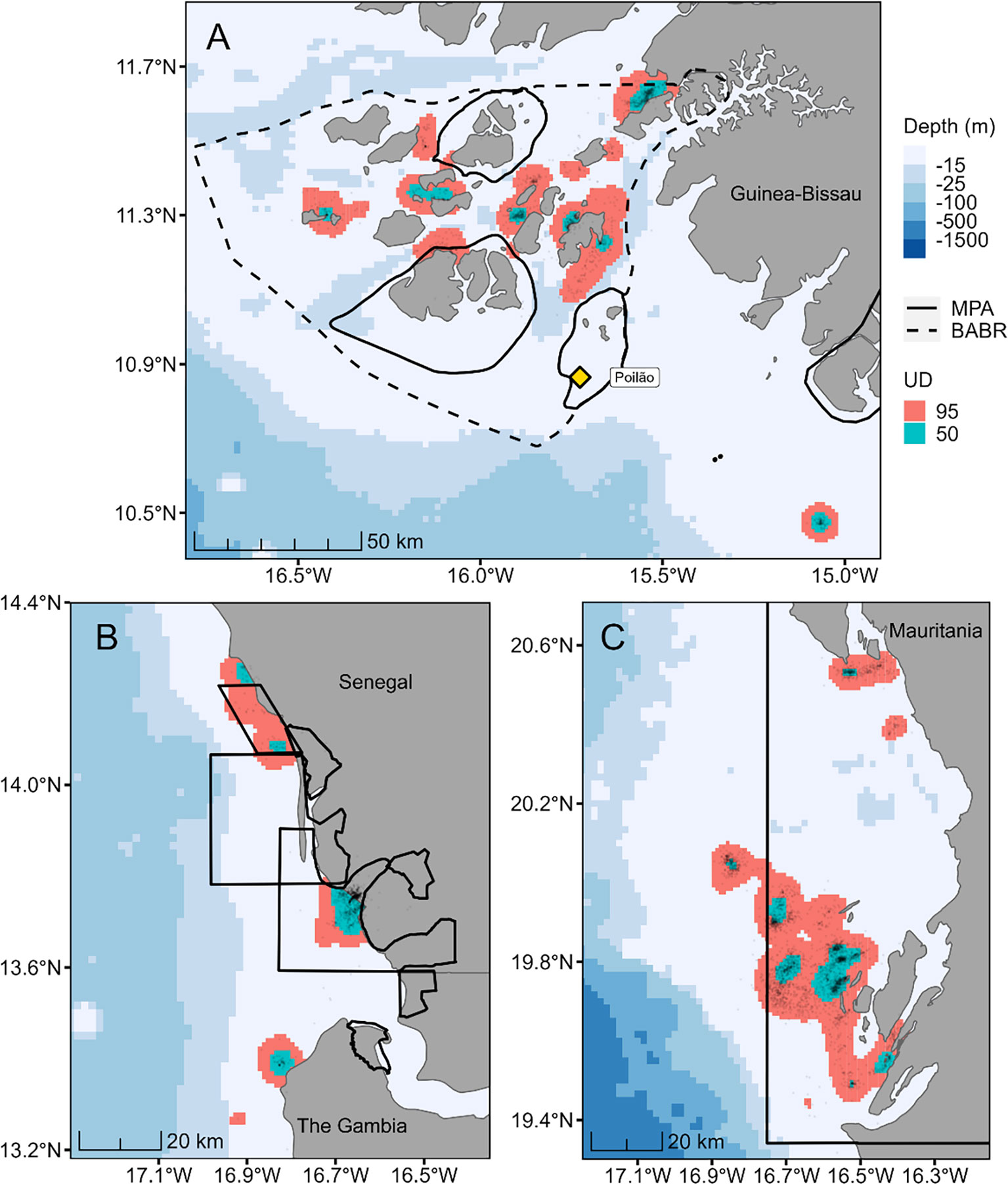
Distribution of 35 female green turtles tracked during post-nesting foraging period in (A) the Bijagós Archipelago of Guinea-Bissau and south of the Bijagós (12 individuals), (B) the Saloum and Gambia river deltas of Senegal and The Gambia (10 individuals) and (C) the Bay of Arguin in Mauritania (13 individuals). Black dots represent tracking locations, and the underlying colored areas represent the 95% (home range area, pink) and 50% (core-use area, blue-green) during foraging. The bold solid lines indicate the location of existing marine protected areas (MPAs) and the dashed line shows the extent of the UNESCO Bolama-Bijagós Biosphere Reserve [BABR]). (from [Patrício et al., 2022])
Increasing protection in some areas
The tracking showed some concentration at some points of the green turtle life cycle. During breeding, the females stayed around the nesting beaches. During migration, they converged around the Cap-Vert Peninsula (city of Dakar). There, a time-limited periodic extension of the protected area to encompass the corridor would be beneficial to their protection, with bans on fishing practices which are involved in turtle bycatch.
It must be noticed that the green turtle rookery at Poilão Island is growing, which can be a possible indication that the existing MPAs are effective in protecting this population.
Other studies have been led on this population, including tracking males (while most of the time the females are equipped, taking benefit of their laying eggs on beaches for this) [Beal et al., 2022], which concluded that they are globally using the same areas than females. Another study concentrated on the Banc d’Arguin, off the coast of Mauritania [Catry et al., 2023], a recognized biodiversity hotspot. It seems to be one of the major foraging sites for green turtles nesting in the Bijagós, Guinea-Bissau. An estimation of the whole green turtle aggregation foraging in this site led to a number of turtles there of the order of 150,000 individuals.
References
- Patrício A.R., Beal M., Barbosa C., Diouck D., Godley B.J., Madeira F.M., Regalla A., Traoré M.S., Senhoury C., Sidina E. and Catry P., 2022. Green Turtles Highlight Connectivity Across a Regional Marine Protected Area Network in West Africa. Front. Mar. Sci. 9:812144. doi: https://doi.org/10.3389/fmars.2022.812144
- Beal, M., Catry, P., Regalla, A., Barbosa, C., Pires, A.J., Mestre, J., Senhoury, C., Sidina, E., Patrício, R., 2022. Satellite-tracking reveals sex-specific migration distance in green turtles (Chelonia mydas). Biol. Lett. 18, 20220325. https://doi.org/10.1098/rsbl.2022.0325
- Catry P., Senhoury C., Sidina E., El Bar N., Samba Bilal A., Ventura F., Godley B.J., Pires A.J., Regalla A., Patrício A.R., 2023. Satellite tracking and field assessment highlight major foraging site for green turtles in the Banc d’Arguin, Mauritania, Biological Conservation, Volume 277, 2023, 109823, https://doi.org/10.1016/j.biocon.2022.109823.

